Key Takeaways
Understanding rental yield is essential for maximizing your commercial property investment.
Proper research and strategy are crucial to avoid common investment pitfalls.
Utilizing available tools can significantly aid in enhancing your investment returns.

Maximizing Your Rental Yield: Strategies and Tips for Commercial Property Investors
Rental yield measures the income you earn from a commercial property compared to its purchase price.
To calculate it, divide the annual rental income by the property’s cost and multiply by 100.
For instance, if you buy a property for $200,000 and earn $20,000 in rent per year, your yield is 10%. This metric helps you evaluate potential returns and make better investment decisions.
Factors like location, property condition, and tenant quality affect yield. Higher yields mean better returns but may also indicate higher risks.
Stick around to discover strategies and tips to maximize your rental yield efficiently.
What Is Rental Yield?
Rental yield is a measure of the income you earn from a property compared to its cost. It’s a useful metric for investors to gauge how well a commercial property is performing.
Basically, rental yield gives you an idea of the return on your investment.
To better understand this, let’s look at some rental yield definitions. You calculate rental yield by taking the annual rental income and dividing it by the property’s purchase price, and then multiplying by 100 to get a percentage.
For example, if you buy a property for $200,000 and you earn $20,000 in rent per year, the rental yield would be 10%.
Now, imagine another scenario where you bought a property for $300,000 and the annual rental income is $15,000. Here, the rental yield would be 5%.
These rental yield examples show that a higher rental yield means a higher return on your investment.
Importance of Rental Yield
Understanding the importance of rental yield helps you make smarter investment decisions in commercial property.
Rental yield is a key metric that shows how much income you can expect from your property relative to its value.
By focusing on this, you can gauge whether a property is worth your time and money.
When you’re diving into real estate, knowing various rental yield strategies can greatly boost your returns.
High rental yields mean better cash flow, which is vital for covering expenses like maintenance, taxes, and mortgage payments.
RELATED CONTENT
It also gives you a clearer picture of the property’s profitability.
Investment property metrics like rental yield let you compare different properties objectively. This way, you’ll know which properties are performing well and which ones might need a second thought.
For example, a property with a 7% yield is generally better than one with a 3% yield, assuming other factors are equal.
Gross Vs. Net Yield
To get the full picture of your property’s income potential, it’s important to know the difference between gross yield and net yield.
Gross yield is the total annual rental income divided by the property’s purchase price, expressed as a percentage. It gives you a quick snapshot of your property’s earning potential without taking expenses into account.
On the other hand, net yield digs deeper. It considers the total annual rental income minus all the expenses related to the property, such as maintenance, management fees, insurance, and taxes.
The result is then divided by the purchase price and expressed as a percentage.
Net yield provides a more accurate picture of your property’s profitability because it accounts for costs that can eat into your income.
Understanding both gross yield and net yield helps you make informed decisions.
Gross yield is useful for a quick comparison between properties, while net yield gives you a clearer idea of what you’ll actually take home.
Factors Affecting Yield
Several factors can influence the yield you get from a commercial property. Understanding these factors helps you make better investment strategies and perform effective risk assessments.
Let’s break down some key elements you should consider:
Location: The property’s location is vital. A property in a bustling city center will likely offer higher yields than one in a less developed area. Make sure you research the local market trends and economic conditions.
Property Condition: The state of the building affects your yield. A well-maintained property attracts more tenants and higher rents, while a property needing repairs might lower your yield due to maintenance costs. Factor in ongoing maintenance in your investment strategies.
Tenant Quality: Good tenants who pay on time and stay long-term can boost your yield. High tenant turnover or unreliable tenants can lead to vacancies and lost income. Conduct thorough background checks as part of your risk assessment process.
How to Calculate Yield
Calculating the yield of a commercial property is essential for evaluating its profitability.
To start, you’ll need to know the annual rental income and the property’s value.
The basic formula is simple: divide the annual rental income by the property’s value, then multiply by 100 to get the yield percentage.
For example, if your property earns $50,000 in rent each year and is worth $500,000, your yield is 10%.
Be careful of yield misconceptions.
Some people think a high yield always means a good investment, but that’s not true. High yields can sometimes indicate higher risks or hidden costs.
Always consider other factors like location, tenant reliability, and market trends.
To achieve yield optimization, look for ways to increase your rental income without drastically increasing costs.
This could involve making property improvements, negotiating better lease terms, or targeting higher-paying tenants.
It’s also wise to regularly review your property’s value and rental rates to ascertain they reflect current market conditions.
Market Research Tips
To maximize your rental yield, you’ve got to do your homework.
Start by analyzing local trends, evaluating comparable properties, and understanding economic indicators.
These tips will help you make informed decisions.
Analyze Local Trends
When analyzing local trends for commercial property rentals, start by gathering data on recent rental prices and occupancy rates in your area.
Understanding these metrics helps you gauge the market’s health and what you can expect for your property.
Pay attention to local demographics.
Who lives or works in the area?
A neighborhood with a growing population or a high concentration of businesses can mean more demand for commercial spaces.
Also, consider seasonal fluctuations. Some areas might see a surge in activity during specific times of the year, impacting rental yields.
To dive deeper, follow these steps:
Collect Historical Data: Look at rental prices and occupancy rates over the past few years. This helps you identify trends and patterns.
Talk to Local Experts: Real estate agents, property managers, and local business owners can provide insider information that’s not always available in reports.
Use Online Resources: Websites and databases often have detailed statistics and trend reports that can give you a clearer picture of the local market.
Evaluate Comparable Properties
Start by identifying properties similar to yours in location, size, and type to get a clear idea of the current market rates.
Look around your area and make a list of key properties that match yours.
This includes property features like the number of units, amenities, and overall condition.
Next, analyze the tenant demographics for these comparable properties.
Who are the typical renters?
Are they businesses in retail, offices, or industrial sectors?
Understanding who’s renting these spaces can help you determine what kind of tenants your property might attract.
Don’t forget to check the rental prices of these properties. This gives you a benchmark to ascertain whether your rental rates are competitive.
Visit real estate websites, talk to local agents, and even check public records if available.
Also, consider the length of time these properties stay on the market before they’re rented out. If similar properties are rented quickly, it indicates strong demand.
Conversely, if they sit empty for long periods, you might need to adjust your expectations or improve your property features.
Understand Economic Indicators
Understanding economic indicators is essential for making informed decisions about your commercial property rental rates.
These indicators provide you with a snapshot of the broader economic environment, helping you predict trends and set competitive prices.
Here’s how you can use economic indicators to your advantage:
Economic Growth: Pay attention to GDP growth rates. When the economy is growing, businesses are doing well, and there’s higher demand for commercial spaces. This can justify higher rental rates. Conversely, during slow economic growth, you might need to be more flexible with your pricing.
Inflation Impact: Keep an eye on inflation rates. High inflation can increase your operational costs, but it also means you can possibly charge higher rents. However, be cautious—if inflation is too high, it might deter potential tenants as their costs rise too.
Employment Rates: Look at the job market. High employment rates often correlate with greater business activity and demand for commercial properties. If employment rates are falling, it might signal economic trouble ahead, potentially decreasing demand for your spaces.
Maximizing Your Yield
To maximize your yield, focus on attracting reliable tenants and keeping your property well-maintained.
Tenant management is essential. Good tenants pay on time, respect property rules, and stay long-term. To attract them, advertise your property effectively and screen potential tenants thoroughly.
Check their rental history, credit score, and references. This helps guarantee you get tenants who’ll take care of your property and meet their rental obligations.
Property maintenance is another key factor. A well-maintained property attracts higher rents and retains tenants longer.
Regularly inspect your property and address any issues promptly. Fix leaky faucets, replace broken tiles, and keep common areas clean. This not only maintains the property’s value but also keeps tenants happy.
Happy tenants are less likely to leave, reducing turnover and vacancy rates.
Consider offering amenities or services that can make your property more appealing.
For example, providing secure parking, high-speed internet, or a well-equipped break room can set your property apart from others.
These small investments can lead to higher rental income and longer tenancies.
Common Pitfalls
Even the best property investors sometimes fall into common pitfalls that can hurt their rental yield.
To help you avoid these mistakes, let’s look at some key areas where you need to be extra careful.
First, poor tenant screening can lead to a host of problems.
If you don’t take the time to check references, credit scores, and rental history, you might end up with tenants who don’t pay on time or damage your property. This can greatly lower your rental yield.
Second, inadequate lease agreements are another common issue. A poorly written lease can leave you vulnerable to legal problems and misunderstandings with tenants.
Make sure your lease covers important details like rent due dates, maintenance responsibilities, and penalties for late payments.
Third, underestimating expenses is a mistake many beginners make. It’s easy to focus on the potential rental income and forget about costs like property maintenance, insurance, and taxes.
Make sure you budget for all possible expenses to get a realistic picture of your net rental yield.
Tools and Resources
To make smart decisions, you’ll need some handy tools and resources.
Property yield calculators can help you quickly figure out potential returns, while market analysis reports give you insights into current trends.
Together, these tools can save you time and help you make better investment choices.
Property Yield Calculators
You can use property yield calculators to quickly determine the potential return on investment for a commercial property.
These tools are great for simplifying complex calculations and can help you make informed decisions about your property management and investment strategies.
By entering basic information such as purchase price, rental income, and expenses, you can get an instant estimate of the property’s yield.
Here’s how a property yield calculator can benefit you:
Time-saving: Instead of manually crunching numbers, you can get quick results, allowing you to focus on other important aspects of your investment strategies.
Accuracy: Calculators minimize human error, giving you precise results that can be essential for your property management decisions.
Comparison: You can easily compare multiple properties side by side, helping you identify the best investment opportunities.
Using these calculators is straightforward.
You’ll typically need to input the property’s purchase price, expected annual rental income, and any recurring expenses.
The calculator will then provide you with the yield percentage, which represents the return on your investment.
This data is invaluable when evaluating the viability of various properties, ensuring you make smart, data-driven decisions.
Market Analysis Reports
How do you make sense of all the data when analyzing the commercial property market?
Market analysis reports are your best friend here. These reports give you a snapshot of the current market demand, helping you figure out where people want to rent.
They also provide valuable insights into local economic conditions and trends, which can guide your investment strategies.
First, look for reports that focus on the area you’re interested in. Local data will be more relevant than national trends.
Pay attention to metrics like occupancy rates, average rent prices, and recent property sales. These numbers can help you gauge the health of the market.
Next, use these reports to spot trends. Is there a growing demand for office spaces but a decline in retail properties?
Such trends can influence your investment strategies. If demand is high and supply is low, it might be a good time to invest.
Finally, don’t forget to check out resources like real estate websites, government publications, and industry journals. They often offer free or low-cost market analysis reports that can help you stay informed.
In short, market analysis reports are essential tools that can help you make smarter investment decisions by understanding market demand.
Conclusion
Imagine standing in front of your commercial property, the sun setting behind it, knowing you’re making the most of your investment.
Understanding rental yield isn’t just about numbers; it’s about securing your financial future.
With the right research and strategy, you can maximize your returns and avoid common pitfalls.
Immerse yourself, use the tools at your disposal, and watch your investment flourish like a well-tended garden.
Related Content:
- What Is Rental Yield and Why Is It Important?
- How To Calculate Leverage in Real Estate Deals (Use Investment Prowess to Build Wealth)
- Top 13 Tax Benefits Every Real Estate Investor Should Know
- Hidden Risks of Real Estate Syndication They Won’t Tell You (Real Estate Investing Success Tampa with Kenneth Gee)



























